
Our Most Ancient Companion
One of the mysteries facing scientists who study evolution is how human beings manage to exist in so many different locations under so many different kinds of conditions while eating just about any kind of food. There simply is not enough time for humans to evolve new genes for dealing with new conditions--but we do. The answer turns out to be, in part, the fact that we carry trillions of bacteria along with us everywhere we go, and those bacteria can literally change their genetics every 20 minutes. Bacteria digest foods that we cannot, and make vitamins and essential fatty acids that we cannot. And "friendly" probiotic bacteria protect us from infection.
- Important notification about information and brand names used in this slideshow!
- Photo courtesy of Jessica Spengler by Flickr : www.flickr.com/photos/wordridden/6124974689/
- www.didyouknow-facts.com/science-facts/10-bacteria-facts.html
- http://bigbrainscience.com/ten-cool-facts-about-bacteria
- http://www.myinterestingfacts.com/bacteria-facts/
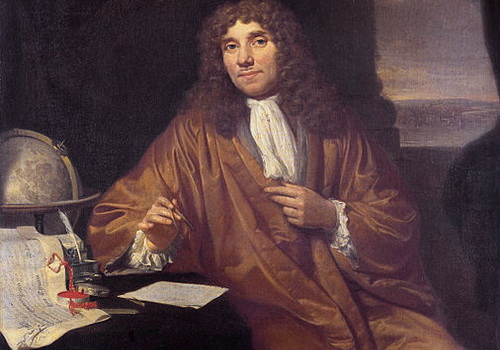
The Discovery Of Bacteria
Scientists have found evidence of bacteria living as long as 4 billion years ago, leaving behind tiny fossils known as stomatolites. Living bacteria, however, were only identified after the arrival of the microscope, which may have been invented as early as the thirteenth century by Roger Bacon, but was definitely in use by the 1590's in Holland. Bacteria are the most abundant members of a class of living things known as the prokaryotes, organisms that do not have a membrane containing their DNA. Because bacteria don't have a "wall" around the DNA in their nuclei, they can readily exchange genes with other microorganisms, and, some scientists believe, even share genes with human cells in the lining of the colon. When bacteria have ability to digest certain kinds of nutrients, they may be able to pass this on to humans.
- Important notification about information and brand names used in this slideshow!
- Photo courtesy of www.rijksmuseum.nl by Flickr : commons.wikimedia.org/wiki/File:Jan_Verkolje_-_Antonie_van_Leeuwenhoek.jpg
- ehemann JH, Kelly AG, Pudlo NA, Martens EC, Boraston AB. Bacteria of the human gut microbiome catabolize red seaweed glycans with carbohydrate-active enzyme updates from extrinsic microbes. Proc Natl Acad Sci U S A. 2012 Nov 27.109(48):19786-91. doi: 10.1073/pnas.1211002109. Epub 2012 Nov 12.

Good Bacteria In Plants And Animals
Many bacteria are "probiotic," meaning that their presence inside a plant or animal is beneficial to their host. A good example of probiotic bacteria in humans is Lactobacillus, a genus (grouping) of many species of bacteria that perform many useful functions in the human body. Some Lactobacilli break down fibers that otherwise would ferment and cause gas in the colon. Other Lactobacilli generate healthy acids that break down the biofilm "glue" that disease-causing bacteria use to stick to tissues in the human body. Still other Lactobacilli generate essential fatty acids that, among other things, protect against cancer. Good bacteria counterbalance bad bacteria, and also train the immune system to release just enough inflammation to keep the body healthy.
- Important notification about information and brand names used in this slideshow!
- Photo courtesy of Tatiana Gerus by Flickr : www.flickr.com/photos/tgerus/3638691640/
- Salminen S, Gueimonde M, Isolauri E (1 May 2005). "Probiotics that modify disease risk." J Nutr 135 (5): 1294–8.
Yogurt As A Source Of Friendly Bacteria
There is no easier way to get your daily dose of friendly, probiotic bacteria than by eating yogurt. Not every kind of yogurt, however, does a body good. Only yogurt that contains living microorganisms, labeled as "live cultures," builds up and maintains the population of helpful bacteria in the small intestine and colon. The more species of bacteria that are listed on the label, the better, but the product won't do you any good if it is pasteurized after the beneficial bacteria are added (as many of the most popular brands are). You can also get your beneficial bacteria from soy and coconut milk yogurts, and from fermented foods such as kimchi and sauerkraut.
- Important notification about information and brand names used in this slideshow!
- Photo courtesy of Kris Miller by Flickr : www.flickr.com/photos/momthebarbarian/2441500/
- Hagedorn S, Kaphammer B (1994). "Microbial biocatalysis in the generation of flavor and fragrance chemicals." Annu. Rev. Microbiol. 48: 773–800.

Antibiotics And Bacteria
The medications that control disease-causing bacteria are known as antibiotics. Antibiotics don't have any effect on viruses, and they are not helpful in treating viral diseases. Shortly after the discovery of penicillin, about 1940, antibiotics were considered to be a kind of wonder drug for treating bacterial diseases that had plagued humankind for centuries. Due to the ability of bacteria to transfer genes on contact, however, chance mutations that protect bacteria against antibiotics spread, so that every year more and more bacteria have genetically conferred resistance to more and more antibiotics. Old antibiotics are effective against fewer and fewer infections, and new antibiotics have to be constantly created. You can do your part to keep antibiotics effective by only taking antibiotics when you need them, not when you have a virus and wouldn't work anyway, and by taking all the antibiotics your doctor prescribes. It's that one resistant bacteria that hangs on through the first part of treatment that can multiply and create an antibiotic-resistant infection later. When you treat bacteria, you need to get them all.
- Important notification about information and brand names used in this slideshow!
- Photo courtesy of David Kalsbeek by Flickr : www.flickr.com/photos/kalsbeek/423568746/
- Walsh F, Amyes S (2004). "Microbiology and drug resistance mechanisms of fully resistant pathogens." Curr Opin Microbiol 7 (5): 439–44.
Reproduction Of Bacteria
Bacteria reproduce by fission, the simple act of doubling DNA and then splitting the cell in two. Under ideal conditions, a bacterium can reproduce itself in as little as 20 minutes. Of course, the process of reproduction every 20 minutes cannot go on very long because there are never enough resources to maintain it. Unchecked, bacterial reproduction at the rate of once every 20 minutes for 3 days would cause a single cell to grow to cover the entire earth! That doesn't happen. Because bacteria have unprotected DNA in their nuclei, that is, their nuclei are not enclosed in a membrane, they can exchange genetic material in a kind of "sex" that allows them to pass on their characteristics to their neighbors, through a process called conjugation. Bacteria can also integrate DNA from other organisms through a process called tranformation, or receive DNA from a virus in a process called transduction.
- Important notification about information and brand names used in this slideshow!
- Photo courtesy of Sanofi Pasteur by Flickr : www.flickr.com/photos/sanofi-pasteur/5280262078/
- Davison J (1999). "Genetic exchange between bacteria in the environment". Plasmid 42 (2): 73–91.
Shapes Of Bacteria
The first bacteria seen through the microscope were tiny cylinders, leading to the choice of the name "bacteria" from the Greek word "bakterion," meaning little cane. Over the hundreds of years scientists have been studying bacteria, however, they have observed many different shapes and sizes, including globules (spheres) and spirals, with and without a cellular membrane. Some bacteria that have a "coat" can be stained with a dye, and are said to be Gram-positive. Other bacteria that lack an outer membrane cannot be stained with this dye, and are said to be Gram-negative. The Gram-negative bacteria tend to be "blobs" that can quickly generate biological markers that cause the immune system to unleash inflammation. Many Gram-negative bacteria cause sexual transmitted diseases or respiratory infections.
- Important notification about information and brand names used in this slideshow!
- Photo courtesy of Thompson Rivers University by Flickr : www.flickr.com/photos/thompsonrivers/4864622390/
- Madigan M
- Martinko J (editors). (2005). Brock Biology of Microorganisms (11th ed.). Prentice Hall.
Bacteria And Fungi
Bacteria do not just keep people, plants, and animals healthy. They also play an important role in maintaining the fertility of the soil. Certain bacteria increase the fertility of the soil by converting nitrogen in the atmosphere into ammonia, which feeds plants so they can make proteins. Animals in turn make their own proteins after eating the plants (or after eating animals that eat animals that eat the plants). Bacteria also form an important role in storing water in the soil. Fungi also live in the soil, playing a complementary role. Bacteria make nutrients for plants, and fungi, which consist of long filaments that can spread up to 100 meters (300 feet) through undisturbed soil, spread them from one location to another. There are up to 40 million bacteria in a single gram of soil, over a billion bacteria in an ounce of soil.
- Important notification about information and brand names used in this slideshow!
- Photo courtesy of Jo by Flickr : www.flickr.com/photos/mangee/31917784/
- Davey M, O'toole G (2000). "Microbial biofilms: from ecology to molecular genetics." Microbiol Mol Biol Rev 64 (4): 847–67.
Bacteria And Oxygen
Many bacteria are killed by contact by air. Other bacteria require oxygen from the air to live. And some kinds of bacteria can live with or without oxygen from the air. Generally speaking, obligate anaerobic bacteria (bacteria that are "obligated" to live in low-oxygen environments) make their energy by fermentation and cause disease, and facultative anaerobic bacteria (bacteria that have the facility to live on the oxygen in the air, or to live on fermentation, so that can survive exposure to air) perform probiotic roles in the human body. This distinction is the reason sometimes doctors advise "airing out" wounds to control the bacteria that may be living in them, and changing bandages to keep wounds clean is necessary.
- Important notification about information and brand names used in this slideshow!
- Photo courtesy of db_in_uk by Flickr : www.flickr.com/photos/db-in-uk/3411989827/
- Schöttler, U. (November 30, 1979). "On the Anaerobic Metabolism of Three Species of Nereis (Annelida).". Marine Ecology Progress Series 1: 249–54
Where Did Bacteria Get Their Name?
The word "bacteria" is the plural of "bacterium," bacteria referring either to a colony of these single-celled microorganisms or a group of them, and bacterium referring to a single, bacterial cell. The term in English comes from the Greek word "bakterion
- Important notification about information and brand names used in this slideshow!
- Photo courtesy of Dschwen by Flickr : commons.wikimedia.org/wiki/File:Zirconium_rod.jpg
- Whitman WB, Coleman DC, Wiebe WJ (1998). "Prokaryotes: the unseen majority". Proceedings of the National Academy of Sciences of the United States of America 95 (12): 6578–83.



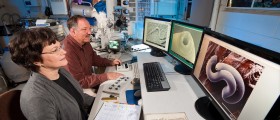











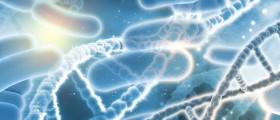






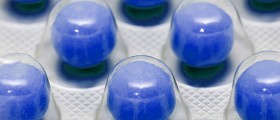

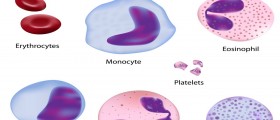

Your thoughts on this
Loading...